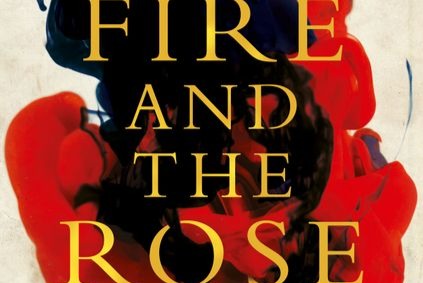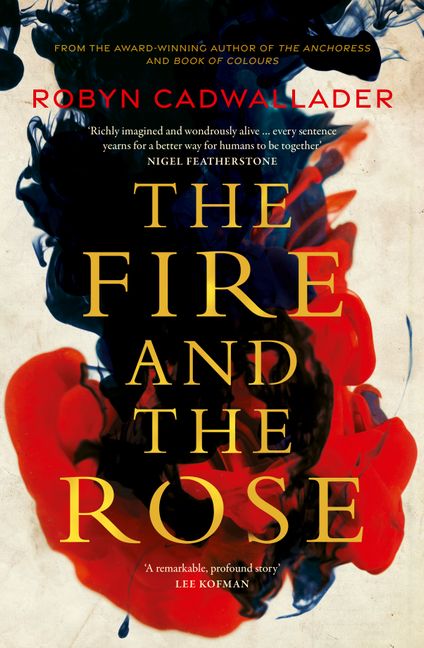
- Free Article: No
- Contents Category: Fiction
- Review Article: Yes
- Article Title: The walls speak
- Article Subtitle: Novelising the other in medieval England
- Online Only: No
- Custom Highlight Text:
Centuries before the Kremlin had a digital presence and long before Ivermectin was trending on Twitter, an early form of disinformation campaigning emerged in medieval Europe: blood libel. These anti-Semitic accusations claimed that Christian children were being killed as part of Jewish religious ritual, a lie used to justify violence against Jewish communities.
- Featured Image (400px * 250px):

- Alt Tag (Featured Image): Naama Grey-Smith reviews 'The Fire and the Rose' by Robyn Cadwallader
- Book 1 Title: The Fire and the Rose
- Book 1 Biblio: Fourth Estate, $32.99 pb, 360 pp
- Book 1 Cover Small (400 x 600):

- Book 1 Cover (800 x 1200):

The novel is told chronologically from 1276 to 1290 (during the reign of Edward I), with Hugh’s tale a persistent memory. Protagonist Eleanor is new to Lincoln, having been forced to leave her village. With no family, and her prospects limited by a birthmark across her face, Eleanor finds work as a housemaid for a wool merchant. Unusually for a woman, she has skills and ambitions as a scribe.
Proud and stubborn, Eleanor carries trauma and grief from her village life, but also loving memories of anchoress Sarah and maid Anna – characters first seen in Cadwallader’s début novel, The Anchoress (2015). Cadwallader set her second novel, Book of Colours (2018), in London of 1321, and has written a PhD thesis on virginity and female agency in the Middle Ages. In The Fire and the Rose, she explores female agency in the broader context of what it means to be ‘other’.
Eleanor falls in love with Asher, a Jewish spice merchant, at a time when laws forbid Christians and Jews from intermingling. Life in Lincoln is governed by ‘the two buildings that loom on either side, the cathedral on her right, the high walls of the castle to her left: religion and law, twin bastions of power’. However, ‘It’s one law for the rich and one for the poor, another still for the Jew’, and the Jewish minority is considered the king’s property. They are severely taxed, arbitrarily imprisoned in the Tower of London, and sometimes do not return. (Lincoln’s Jews are made to wear an identifying yellow badge, an anti-Semitic law most contemporary readers will associate with Nazi Germany rather than thirteenth-century England, but which is historically accurate.)
The narrative is interspersed with short poetic sections titled ‘The walls speak’. Here, the stone walls of Lincoln recount the lingering presence of history over the sweep of time, revealing what they have witnessed. This personification – a literal case of ‘if these walls could talk’ – is ambitious, but Cadwallader (who has also published a book of poetry) succeeds by keeping them brief and relevant. Rather than functioning like stand-alone poems, these sections amplify a chapter’s emotional resonance and provide commentary on the events, as a Greek chorus might. They invite the reader to pause, reflect, and perceive human events from a grander view.
Eleanor and Asher’s romance is passionately sensuous but also reflects their shared love of language, words, and books – and the understanding that stories have power. In time, Eleanor learns to see Asher more fully:
Even as she knows his body so well, he is so much more than her own need and desire: more than a friend and lover, or the father of her daughter, or Abraham and Bona’s son, or the spicer, or a Jew, but as a person, magnificent in his difference from her.
This seeing is important to a book that engages deeply with the concept of ‘the other’. The walls announce that ‘The other is always more / more than you can contain or know’ and decry how people ‘kill the one you cannot understand / other woman Jew’. The novel’s epigraph references French Jewish philosopher Emmanuel Levinas, notable for his work on alterity and an ethics that refuses to objectify or reduce ‘the other’.
Nonetheless, Eleanor can be frustrating in her demands to have her own pain prioritised by her Jewish associates in their moments of greatest need, such as after beatings and arrests. When the king’s edict expelling all Jews from England is announced in 1290 (an expulsion that historically lasted for more than 350 years), Eleanor ‘almost envies the Jews making their plans, thinking of where they will go, who they will travel with, what they will do’, as if they had a choice in leaving. Then again, Eleanor is believable even when she is unlikeable, and, as with all of Cadwallader’s characters, is made real through her flaws. With the third-person point of view limited to Eleanor’s thoughts and feelings, the characters of Marchota (a sardonic elderly Jewish woman) and Hannah (Eleanor’s young daughter) offer a particularly refreshing counterpoint to the protagonist.
The plot drivers in this novel are the unfolding truth about Hugh’s martyrdom and the fate of Eleanor’s and Asher’s love, and though the compelling first half moves into a somewhat repetitive third quarter, the reader remains invested in the rich world Cadwallader has created through to its conclusion.
The novel’s strength lies, above all, in its exquisite use of setting, bringing thirteenth-century Lincoln to life in every detail. Cadwallader’s skill in evoking a sense of place is first-rate. It’s the kind of immersion that makes you pause in wonder – remembering Lucy Treloar’s nineteenth-century Coorong or David Whish-Wilson’s gold-rush-era San Francisco – and think, ‘Ah, so that’s how it’s done.’


Comments powered by CComment